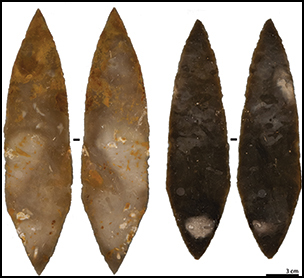Published online by Cambridge University Press: 27 June 2018

The laurel-leaf points of the Volgu cache found in eastern France rank among the most remarkable examples of skilled craftsmanship known from the Solutrean period of the Upper Palaeolithic. In addition to pressure flaking, heat treatment may have helped in the making of the points, as both have been previously described in association with Solutrean assemblages. This study presents the results of an infrared spectroscopic analysis of seven artefacts from the Volgu cache conducted to test this assumption. The findings show that heat treatment was not universally applied to this particular tool type, meaning that we must rethink the reasons why such a technique was used.